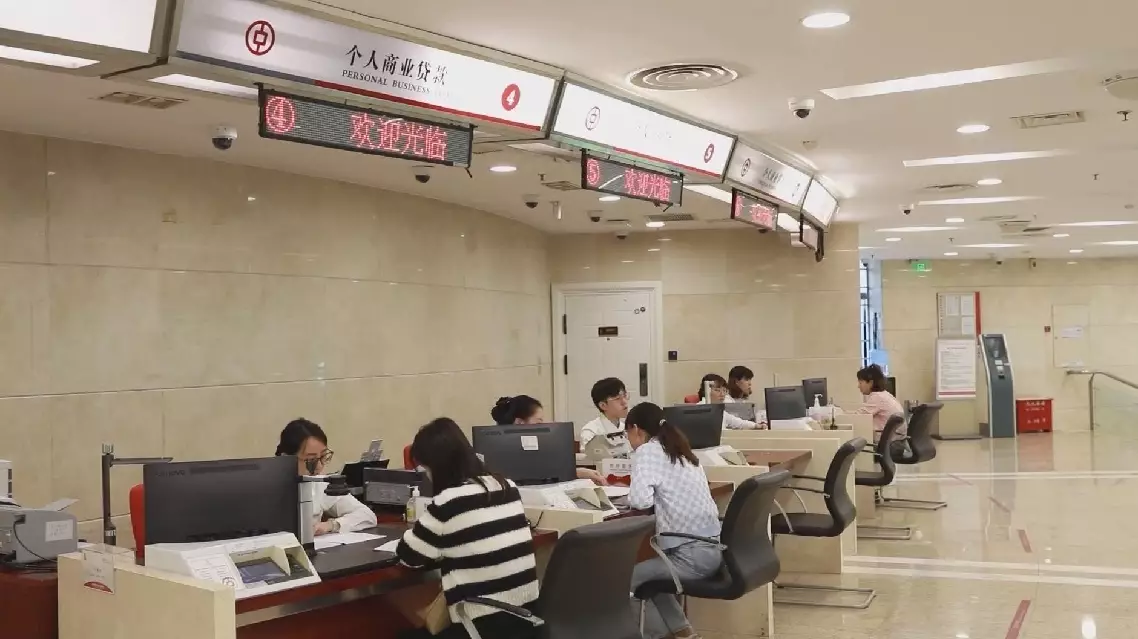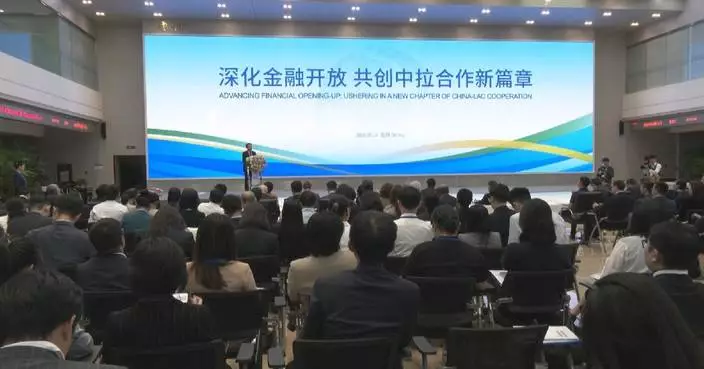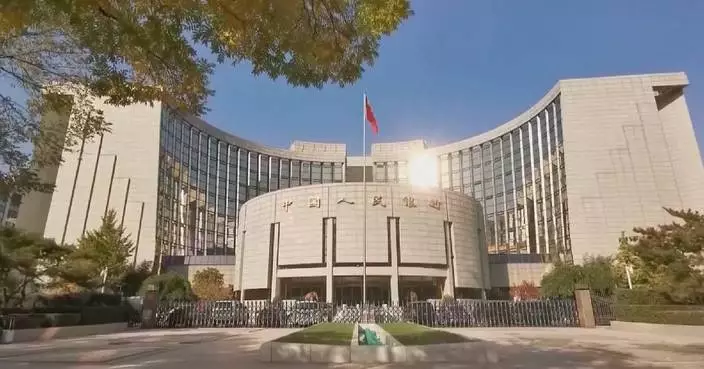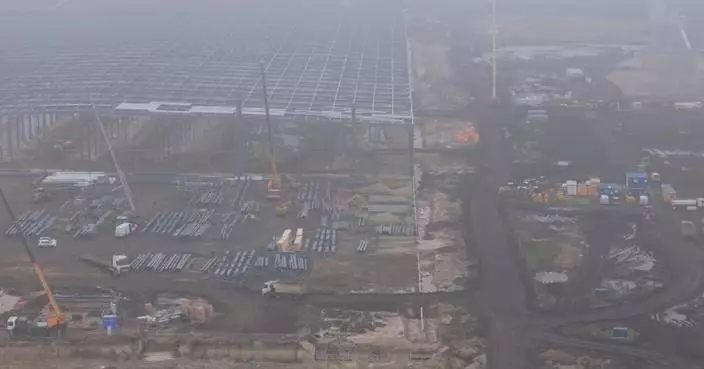Dazzling lantern displays are being staged in Kunming City in southwest China's Yunnan Province and in China's capital city Beijing during the Spring Festival holiday, bringing festive joy to residents and tourists alike.
The Spring Festival, the most important festival in China, fell on Jan. 29 this year, with an eight-day public holiday running from Jan. 28 to Feb. 4.
At Kunming's Daguan Pavilion, a lantern show has captivated visitors with its vibrant lights, intricate designs and lively folk performances.
The lanterns displayed at Daguan Pavilion are filled with typical Yunnan elements, featuring iconic animals from the region, such as elephants and peacocks.
Visitors can also indulge in local delicacies at nighttime food stands. The stunning lanterns and tempting snacks attracted nearly 60,000 visitors to Daguan Pavilion during the first five days of the Chinese New Year.
A lantern fair is also lighting up the night at the Beijing Garden Expo Park in China's capital city.
Covering an area of more than 500 hectares, the lantern fair is showcasing over 10,000 Zigong lanterns, crafted by skilled lantern makers using intangible cultural heritage techniques.
Particularly eye-catching are the lanterns in the Chinese Pavilion which showcase architecture, local animals, and flowers from across the country. In the Garden of Beijing, lanterns in the shape of Peking Opera figures, swifts, and chrysanthemums are on display, highlighting the rich cultural heritage of the Chinese capital.
The expo park is also staging immersive light shows to wow visitors along with a drone light show where 600 drones form images and characters including "Happy Chinese New Year".
In addition to the lanterns and light shows, visitors can also enjoy traditional folk art performances, including dragon and lion dances, to fully immerse themselves in the atmosphere of the festival.
The lantern fair at the Beijing Garden Expo Park runs till March 15.

Colorful lanterns light up night in Kunming, Beijing
China recorded a relatively fast credit growth in the first four months of this year, providing solid support for the country's real economy, economists said.
China issued 10.06 trillion yuan (about 1.39 trillion U.S. dollars) in new yuan-denominated loans in the first four months of 2025, data from the People's Bank of China, the central bank, showed on Wednesday.
"The reasonable growth of new loans fully meets the effective financing needs of the real economy from equipment renewal in manufacturing to capital turnover in the service industry, and stimulates the vitality and creativity of market entities," said Lu Zhe, chief economist of Soochow Securities Co., Ltd.
Dong Ximiao, chief researcher of the Merchants Union Consumer Finance Co., Ltd, has also noted that at the end of April, the growth rate of yuan-denominated loans was still significantly higher than the nominal economic growth rate.
"In the fourth quarter of last year, the issuance of special refinancing bonds for debt repayment exceeded 2 trillion yuan. From January to April of this year, nearly 1.6 trillion yuan worth of such bonds were issued. Market research estimates that the corresponding loans to be replaced amount to about 2.1 trillion yuan. After adjustment, the growth rate of yuan-dominated loans remained above 8 percent at the end of April. It is expected that the growth of the financial aggregate will remain stable in the next stage," Dong said.
Meanwhile, financing costs remained at historically low levels. Data showed that the weighted average interest rate on new corporate loans issued in April was around 3.2 percent, about 4 basis points lower than that in the previous month, and the weighted average interest rate on new personal housing loans stood at about 3.1 percent.
"The steady growth of financial data in April indicates that the 'moderately loose' monetary policy has continued to show its effectiveness. The growth in both quantity and quality of loans, the reasonable increase in money supply, plus abundant liquidity, demonstrate the strong support of the financial system for the real economy," said Lu.

China's relatively fast credit growth provides solid support for real economy



















































